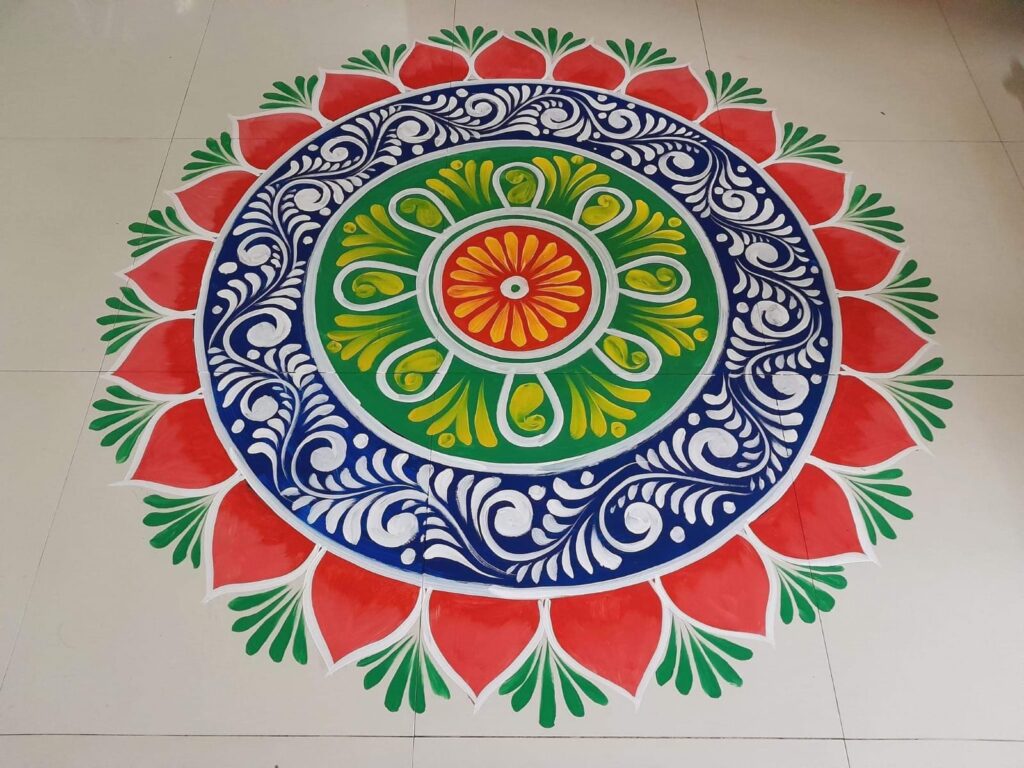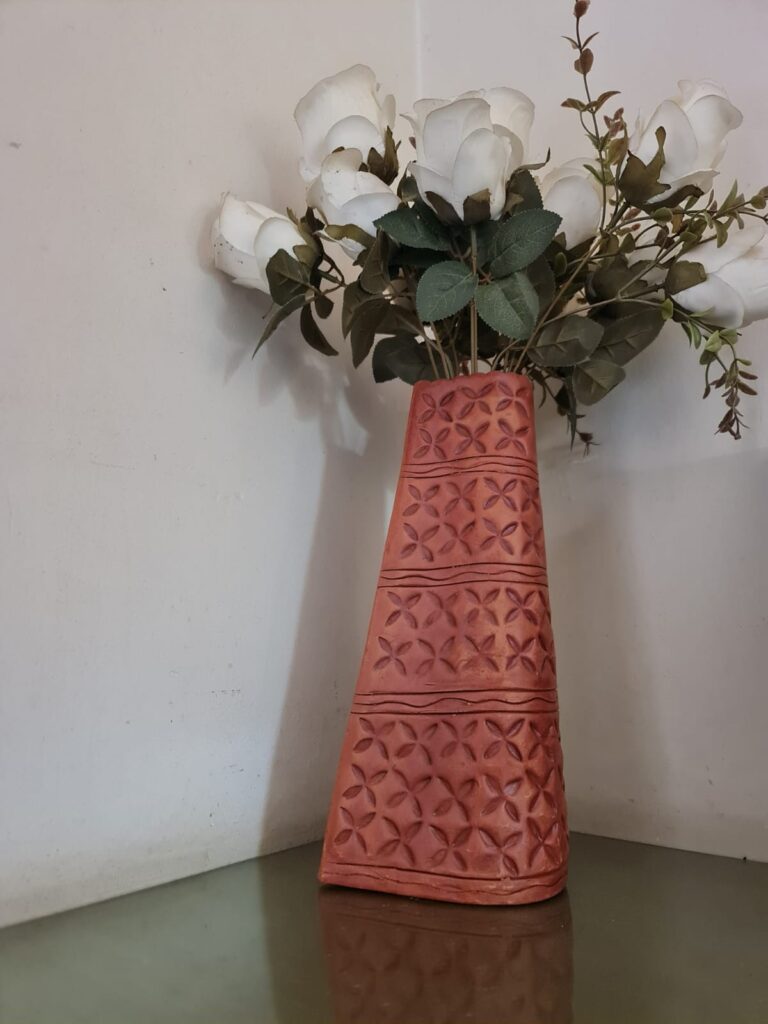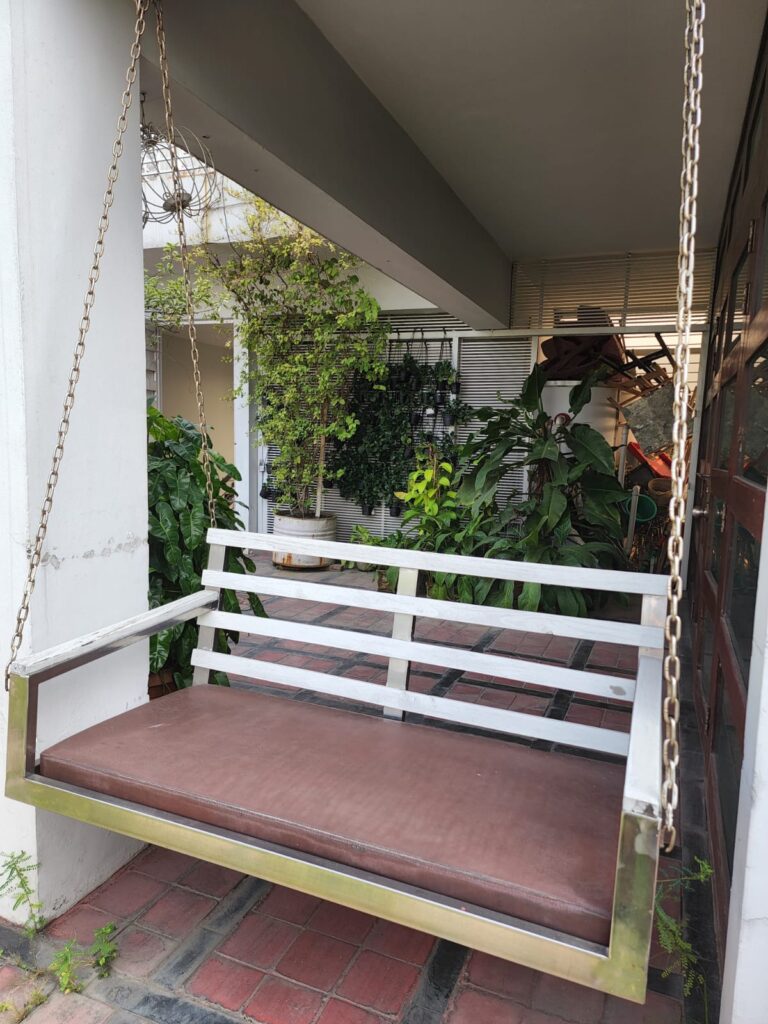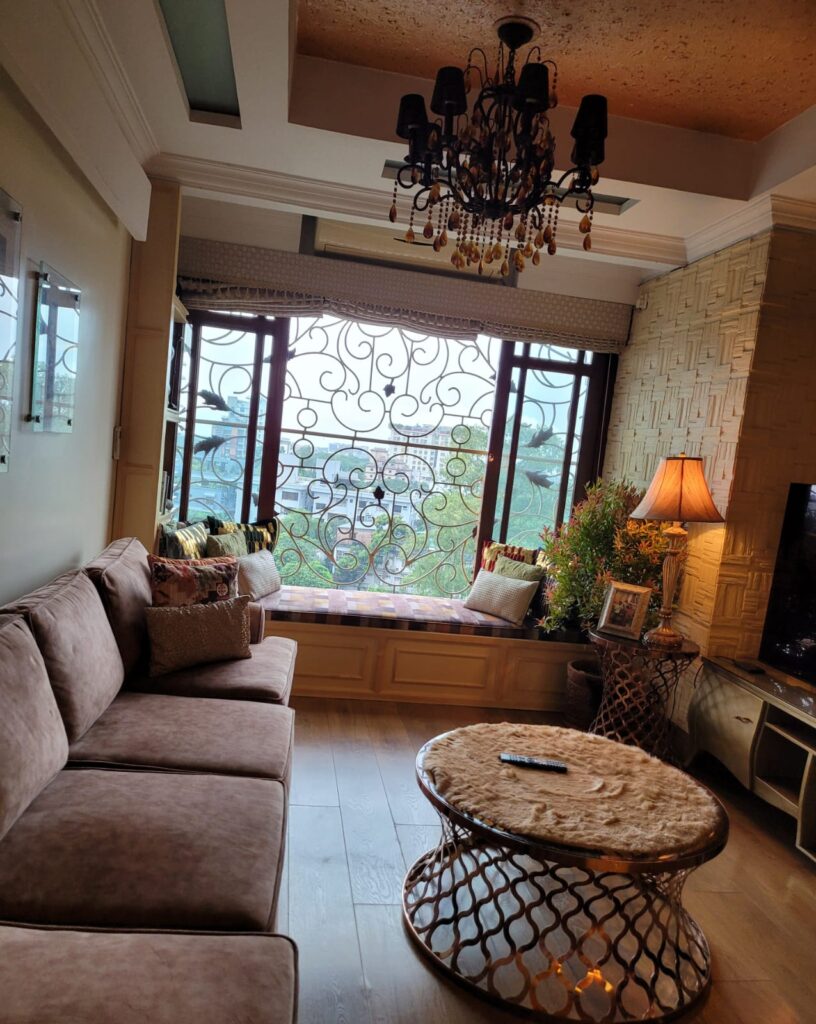Take a sneak peek into the vibrant world of Bengali home decor, where each piece tells a story of creative skill, tradition, and culture. A symphony of hues decorates Bengali households, reflecting Bangladesh’s rich history. Terracotta sculptures bring old mythology to life, while intricate handwoven tapestries, called “kanthas,” recount stories of bygone eras. In keeping with the warmth of Bengali hospitality, warm colors like red and gold provide a cozy atmosphere. Bengali house décor tells stories of timeless beauty, from the recognizable “alpona” floor paintings to the exquisite “dhokra” metalwork.
Shilaidaha Rabindra KuthiBari
A significant component of Rabindranath Tagore’s life and literary legacy is Shilaidaha Rabindra Kuthibari, located near Kushtia, Bangladesh. Built-in the late 1800s, the historic house was Tagore’s hideaway and the setting for some of his most well-known compositions, including “Gitanjali.”Shilaidaha Rabindra Kuthibari’s architecture bears evident colonial influences from the era, showcasing spacious verandas, intricate woodwork, and a serene atmosphere that reflects Tagore’s love for the natural world.

Shilaidaha Rabindra Kuthibari offers an insight into the Tagore family’s aesthetic choices when it comes to their home décor.
Traditional Bengali features decorate the living areas, including handwoven fabrics, regionally made furniture and indigenous artwork. The décor, dominated by earthy hues and natural materials, brings feelings of Tagore’s relationship to the countryside and his philosophical contemplations.


The preservation efforts have maintained the original furnishings and atmosphere to preserve Shilaidaha Rabindra Kuthibari’s historical and cultural value. The house now serves as a museum, allowing people to see the poet’s living space and learn about the intellectual and creative environment that influenced Tagore’s classic works. Rabindranath Tagore’s life is a live example of how history, literature, and domestic aesthetics came together at Shilaidaha Rabindra Kuthibari.
1990s – Nostalgic Elegance
“Unveiling the Timeless Charm of 1990s Home Decor in Bangladesh – Nostalgic Elegance” takes us back to an era when Bangladeshi homes seamlessly blended modern and rich cultural elements in their furnishings. In the 1990s, Bangladeshi homes exuded a specific allure characterized by vibrant color schemes, traditional handwoven fabrics, and a penchant for wooden furniture, embodying a balance of luxury and simplicity.

This era’s interior design is a reflection of Bangladesh’s cultural character, skillfully fusing global trends with local crafts. The warm and welcoming ambiance was primarily created using locally produced materials, intricate patterns, and brass decorations.
Crafted Comfort: Large wooden beds
During the 1990s, large wooden beds were an essential component of Bengali interior design, exhibiting a fusion of tradition and contemporary design. These beds, made of rigid hardwoods and with elaborate headboards and carvings, embodied the great woodworking tradition of the area.

The wood’s warm, earthy tones gave bedrooms a touch of rustic appeal. Mosquito nets were to be hung from the wooden stands surrounding the bed. The mosquito net could be strung without needing to fasten an additional hook to the wall if it had support. These large beds were statement items that reflected a cultural passion for comfort and artistry, in addition to being valuable pieces of furniture.
Metallic Harmony: The Allure of Steel and Wooden Alnas
Bengali households adopted a particular kind of alnas made of steel and wood that combined elegance and practicality. These adaptable storage containers combined sturdy steel frames with hardwood accents to create a visually stunning and robust combination. The contrast of materials produced a piece of furniture that was visually pleasing and frequently had elaborate patterns. These alnas, which doubled as ornamental accents and storage options, captured Bengal’s practical yet artistically aware interior design style in the 1990s and represented a time when dwellings skillfully combined modern utility with traditional artistry.


Staircase Elegance: Adoring the Aplona
In the charming realm of Bengali household fashion, staircases were used as canvases to express the intricate beauty of alponas. The spirit of this creative heritage is encapsulated in these floor paintings. The colorful and significant floor murals known as alponas adorn stairs with captivating patterns and vivid colors while telling stories of spirituality and tradition. Staircases in Bengali homes that adopt the alpona tradition have a celebratory feel since each step tells a story of the home’s cultural legacy.



Images: Annono Rahman
Ascending or descending, the themes and colors create an immersive experience that symbolizes joy and auspiciousness. This tasteful fusion of alpona artwork and staircase construction turns utilitarian areas into visual marvels and bears witness to the continuing cultural richness ingrained in the core of Bengali homes.
Terracotta Tales
Terracotta is a timeless representation of artistic grace and rustic charm in Bengali home décor. These clay pieces, from elaborately sculpted wall panels to elaborate figures, combine traditional workmanship and modern aesthetics in a seamless way. Warm, earthy tones found in terracotta lend living areas a feeling of grounded elegance and a nod to the area’s rich cultural legacy.





Images: Ashif Haider
Terracotta in Bengali homes goes beyond simple ornamentation, serving as a conduit that infuses the spirit of Bengal’s creative heritage into the very fabric of interior design, whether it is used to decorate walls, shelves, or garden areas. Terracotta is an essential material that adds a timeless and natural touch to the visual mosaic of Bengali houses because of its sensory attraction and cultural importance.
Dhokra – metalwork
Bengali artisans weave an artisanal splendor into home décor using the traditional metal casting method known as dhokra. Artifacts made of finely sculpted brass or bell metal manifest this ancient skill, which has its roots in Bengal’s cultural history. Dhokra pieces, which range from utilitarian objects to figurines, have a certain appeal reflecting the expert craftsmanship passed down through the years.



Images: Shukarno Ibrahim
The skill is in the painstaking wax casting technique, which yields sophisticated and authentically rustic works. Dhokra is a mark of pride in Bengali culture that infuses living areas with a hint of history. Every item tells the tale of expert hands turning molten metal into eternal gems, bringing tradition and modern elegance together in a stunning way at the center of a Bengali household.
The Dual Role of Nakhshi Katha
The traditional embroidered quilt known as a “Nakhshi Katha” is a compelling feature of Bengali home décor that goes beyond its practical utility. Nakhshi Kathas are multipurpose wall hangings and blankets that tell elaborate tales with colorful threads. These unique textile creations, embroidered with intricate stitching that portrays mythology, folklore, or everyday life, provide the walls with a cultural tapestry while serving as blankets in the colder months.



Nakhshi Kathas, whether draped over beds or hung with pride, arouse feelings of nostalgia and family history, converting living areas into galleries of needlework stories. Their adaptability resides in their practicality and capacity to provide a rich visual aesthetic to Bengali dwellings that align with the area’s cultural legacy.



A step into the roaring 2000s
Bangladesh’s home fashion has evolved significantly, fusing local elements with contemporary aesthetics. The 2000s saw a move toward modern designs that prioritized simplicity and practicality. Traditional crafts and locally derived materials rose in popularity as time passed, supporting sustainability.

Bangladeshi homes today exhibit a tasteful blend of local and international design features, with a growing emphasis on customized and environmentally sustainable interior design. The dynamic blend of the old and the modern is reflected in the home fashion scene, which shapes living spaces with a dash of refinement and cultural pride via anything from creative furniture designs to colorful fabrics.
Comfort Chaos
The development of bedrooms in Bengali home design from the 2000s to the present demonstrates a tasteful fusion of history and contemporary comfort. Though hardwood beds and alnas remain classic, mirrors provide a modern touch. There has been a noticeable change in attention towards comfort, with individuals choosing cozier and more luxurious mattresses.

This metamorphosis reflects a changing aesthetic that mixes the timeless allure of classic furniture with a contemporary need for ease and practicality. Bedrooms nowadays are the epitome of a blend of modern comfort and traditional beauty, representing the dynamic progression of Bengali home design.
House Oasis: From Terraces to Balconies, A Green Sanctuary Among Artistic Extravagance”
Balconies have become standard features in both rural and urban dwellings and have evolved into private havens for people who like indoor gardening. In addition to bringing nature indoors, these verdant havens offered a welcome diversion from the busy daily life. Besides, some people may choose to convert these balconies into a mini library or utilize it for other purposes.


Conversely, terraces developed into outdoor retreats with lush plants and lovely swings that provided residents with pleasant moments of relaxation.



The pastel color scheme of the 2000s was dominated by gold, silver, and ivory, which were fashionable interior design materials. Wallpaper trends took off, showcasing vivid patterns and striking designs that gave living rooms a layer of visual depth. Desirable objects and hand-painted dressers showcased personal artistic expressions that gave bedrooms a unique touch.

Magnificent dining rooms and living areas have chandeliers, which hung there like everlasting declarations of grandeur due to their sparkling presence. An unusual touch to the interior design of the time, indoor aquariums brought a sense of peace and nature within the house. Moreover, table lamps bring intrigue and elegance to the house.





Images: Saradiba Hossain
The hanging paintings and portraits that became focal points in the overall design plan reflected the era’s preoccupation with art and self-expression. Whether adorning the walls of opulent foyers or intimate living areas, these creative accents told tales and elevated the atmosphere.
Paintings: “Ericaceae by Sara Hossain” and Ashif Haider



Images: Saradiba Hossain
Every age adds to the collective story of Bengali household fashion, a complex mosaic. It’s a tale of adaption, where cultural pride in every aspect of house design and tradition coexists peacefully with the modern. Bengali homes are living galleries, telling stories of timeless beauty and enduring cultural richness, whether it’s through the echoes of Rabindranath Tagore’s legacy, the nostalgia of the 1990s, or the contemporary conveniences of the 2000s.

